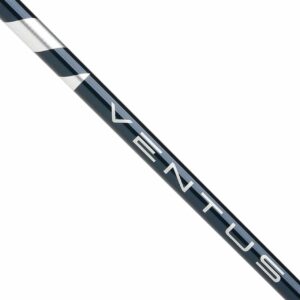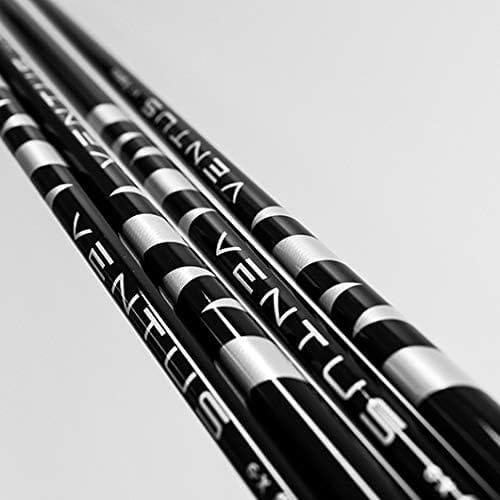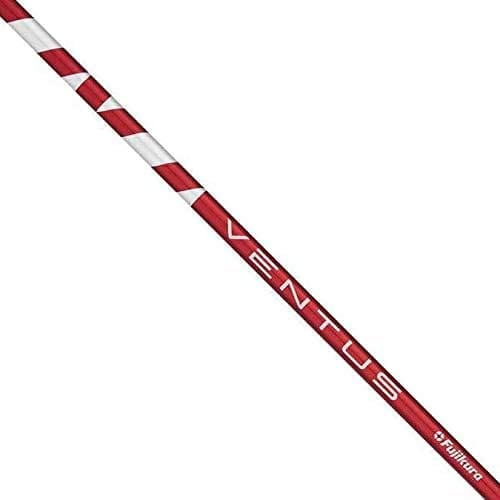The Fujikura Ventus golf shaft line is among the most well-known and widely used by amateurs and professionals. While three choices seem easy to navigate, comparing Ventus Blue vs Black vs Red requires an in depth look each, and more importantly for your decision, how you hit the ball.
Designed for drivers, woods, and hybrids, the right shaft means more fairways, greens in regulations, and added distance. Making the wrong choice leads to loss of distance, wider shot dispersion, unpredictable ball flight, and less consistency overall.
But how do you know what’s best? You figure out exactly what each Ventus shaft is designed to help with and the benefits provided. And how do you do that? You continue reading. Below, we cut through the technical jargon and break it down so the common golfer can make a selection for themselves.
Overview of Fujikura Ventus Shafts
For the last 25 years, Fujikura has been amongst the leaders of golf shafts in North America. Cycling in new designs roughly every few years, the Ventus shaft debuted in 2019 and was quickly embraced by the masses. Now, much like TaylorMade has been doing with the “M” series driver, they are continuing to build on the line’s popularity and success seen by golfers by introducing the Ventus TR line.
It is not going out on a limb to say that aftermarket golf shaft selection begins with the Fujikura Ventus line. While it does not have the market share that ProV1 golf balls have, this line is the most common of all aftermarket shafts.
The nice thing about golf? Even though new products arrive every year, the technology does not change much. Now if you compare a product made 15 years ago vs one of today, those small changes will have added up. But when it comes to the Ventus and Ventus TR lines, they are more or less the same. Where you will see a big difference though is the price.
After the Ventus TR shafts were introduced, the originals became more affordable and on par with lesser clubs pricewise, despite being of significantly higher quality. For those familiar with the brand, this is a welcome fact. Additionally, because the Ventus and Ventus TR are so similar, finding a fit with one is finding a fit with both. You can comfortably analyze the two as if they were the same.
Ventus Blue Shaft: Features and Player Profile

Best suited for the largest number of golfers, the Ventus Blue shaft is low spin, mid-level launch shaft. It is a good fit for golfers at most swing speeds and ability levels.
One of the most important aspects to highlight is the stiff tip on all models, regardless of overall flex selection. This feature provides a boost to control and helps to provide feedback. It also accentuates any errors in your swing path, giving you an immediate idea of where a miss came from.
Built for smooth and aggressive swings alike, Ventus blue is the safest option if you are unsure of what your best fit will be.
Ventus Black Shaft: Features and Player Profile

Designed for low handicappers with high swing speeds, the Ventus Black shaft is a great option for only a small crowd. This shaft, even at regular flex, is difficult for lesser skilled players to get the timing right due to stiffness from handle to tip. Additionally, the low spin and launch makes it difficult to control for even high single digit players.
With the Ventus Black, the stiffness up and down the shaft is significant enough that even the most aggressive and fast swings result in straight shots. The full profile of this club reduces shot dispersion no matter where your speed comes from.
Ventus Red Shaft: Features and Player Profile

The Ventus Red shaft is designed for mid to high handicaps and helps to hit the ball higher and with better shape. This leads to increased carry distance and greater control over shots as a whole.
Because of increased flexibility compared to other Ventus shafts, it is also easier to “activate” with smoother swings and lower speeds.
While it may be a “red flag” that the club designed to provide the most assistance comes with higher spin rates, this is a purposeful design feature. It is less about big slices and hooks than it is shaping the ball ever so slightly through your natural swing to produce a few more yards.
Comparative Analysis: Blue vs Black vs Red
So how can I keep track of which shaft is for which players and what are the major differences? Let’s take a look at some of the most common things golfers need to know.
Recommended Skill Level
The easiest way to remember how your golf shaft selection should go with the Ventus line is to think about how tees are lined up at courses. The Red shaft is designed for lower skilled players and provides the most assistance. The Blue shaft fits in the middle. This is typically best for golfers with handicaps between 7 and 15. The Black shaft is for the most skilled golfers, much like black tees on the course.
Control
Like the analogy above, Ventus shafts become more difficult to control as you progress upward. The Red shaft is easiest to control. The Blue shaft is more workable, but still easy enough for average golfers to find the fairway with. And the Black shaft is difficult to control for anyone but the best golfers.
Flex
Because of their popularity amongst golfers of all levels and swing speeds, you can get a Red, Blue, or Black Ventus shaft in nearly all flexes. One note is that there are more regular flex options for the Red shaft and more stiff flexes with the Black shaft.
Weight
When it comes to weight, there is not much of a difference between the three options. Each of the Red, Blue, and Black clubs come with a wide variety of options. However, Black shafts have a few heavier options not offered with the other choices.
Choosing the Right Ventus Shaft for Your Game and What the Pros Use
There is not a single golf club, shaft, or piece of equipment that is one size fits all. Every individual thing comes down to personal preference and what will work best for you. Sometimes the $25/dozen ball outperforms the $60/dozen ball. It’s not because the more affordable ball is some kind of hidden gem. It’s because it works best for you.
Even at the professional level, there are players using the Ventus Red shaft despite the fact it’s marketed to provide more assistance, assistance you wouldn’t expect a pro to want or need. It’s about what fits their swing at the moment. To that point, Harris English has been seen using Ventus Black, Blue, and Red shafts. It’s because they were the right fit for what his swing was doing and what he hoped to accomplish. Additionally, others like Cameron Smith, Will Zalatoris, and Phil Mickelson have flip flopped between models within the Ventus line.
To get a better idea of just how many players use these shafts, and rotate through them, you can visit the PGA Club Tracker website.
These players, like you will need to do when making your purchase, assessed their needs and made a decision based on it. They did not just default to Black because it leans towards the best players.
Final Recommendations
The stock shafts that come with a new driver are designed to produce solid results for all golfers using them. They are high quality, but there is nothing special about them. When you move to an aftermarket shaft, you are making a selection based on your unique swing and patterns.
Your determining factors should be launch and spin. While other factors such as bend point and weight should come into consideration, allowing them to drive any decision is ill-advised.
- Golfers who struggle to elevate the ball off the tee and need a little bit of a boost from their equipment are at their best using the Ventus Red shaft.
- Have decent speed and control? The Ventus Blue shaft is a nice option and will be the choice for the largest number of golfers.
- The Ventus Black shaft is best for a small number of golfers. This is the population who already have an optimal launch angle of their own doing and regularly shape the ball.
But what about flex? Flex should be a secondary consideration, just below and launch and spin. The reason we do not consider this a top priority is that it is determined for you. While your ball flight and shape may vary shot to shot, speed is a constant. If you have a driver head speed of 100 mph, you know your best fit is with a stiff shaft. There’s nothing to negotiate. For reference:
- Swing speeds of 75 – 95 mph = regular flex.
- Swing speeds of 95 – 105 mph = stiff flex.
- Swing speeds of 105 mph and higher = extra stiff flex.
Use these points to make your compare Ventus Blue vs Black vs Red and you will be able to determine your best shaft. And once you make that decision? The proof will be in your results.


